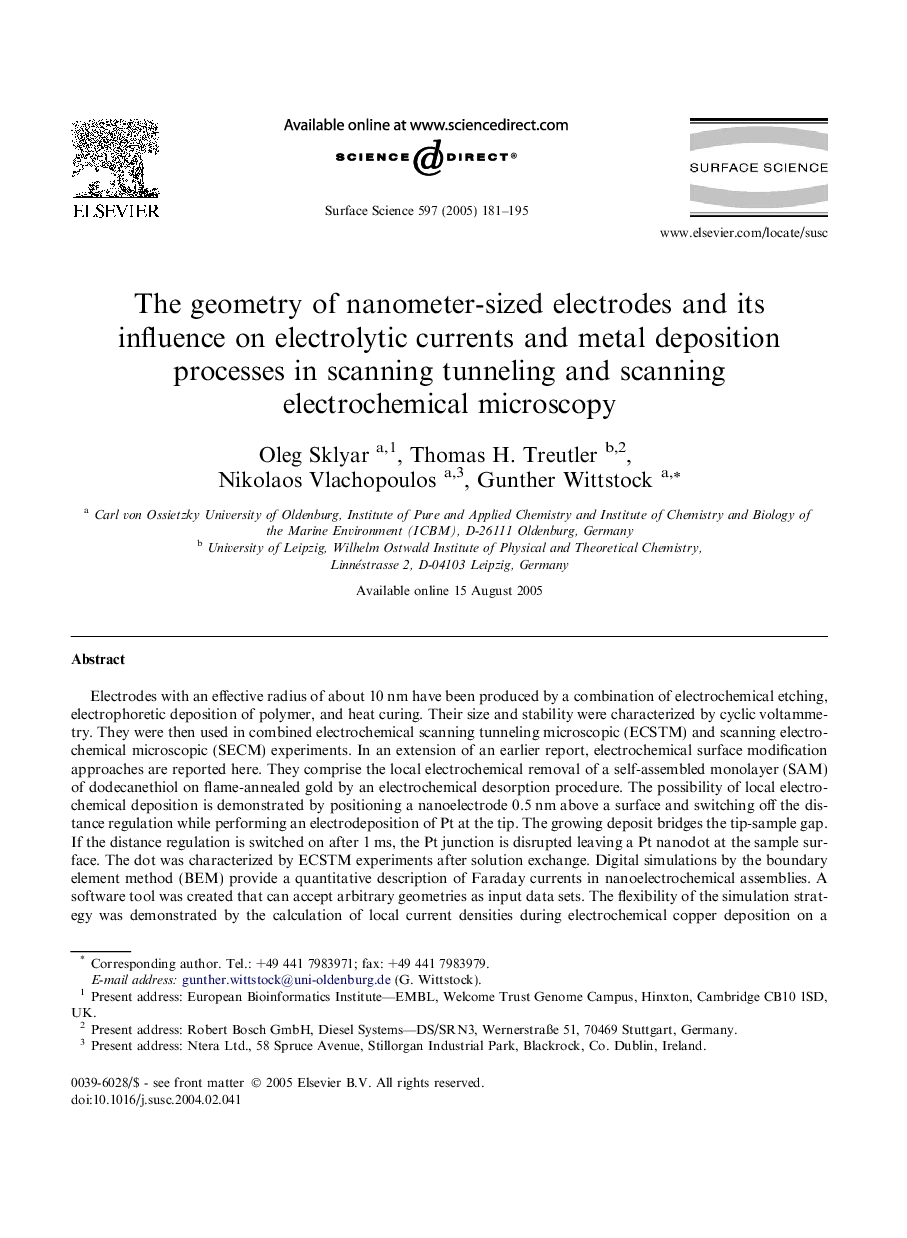| Article ID | Journal | Published Year | Pages | File Type |
|---|---|---|---|---|
| 9594763 | Surface Science | 2005 | 15 Pages |
Abstract
Electrodes with an effective radius of about 10 nm have been produced by a combination of electrochemical etching, electrophoretic deposition of polymer, and heat curing. Their size and stability were characterized by cyclic voltammetry. They were then used in combined electrochemical scanning tunneling microscopic (ECSTM) and scanning electrochemical microscopic (SECM) experiments. In an extension of an earlier report, electrochemical surface modification approaches are reported here. They comprise the local electrochemical removal of a self-assembled monolayer (SAM) of dodecanethiol on flame-annealed gold by an electrochemical desorption procedure. The possibility of local electrochemical deposition is demonstrated by positioning a nanoelectrode 0.5 nm above a surface and switching off the distance regulation while performing an electrodeposition of Pt at the tip. The growing deposit bridges the tip-sample gap. If the distance regulation is switched on after 1 ms, the Pt junction is disrupted leaving a Pt nanodot at the sample surface. The dot was characterized by ECSTM experiments after solution exchange. Digital simulations by the boundary element method (BEM) provide a quantitative description of Faraday currents in nanoelectrochemical assemblies. A software tool was created that can accept arbitrary geometries as input data sets. The flexibility of the simulation strategy was demonstrated by the calculation of local current densities during electrochemical copper deposition on a smooth electrode in the presence of an ECSTM tip close to the surface. The current densities deviate less than 1% from those in the absence of tip if the average current density is kept below 1 μA cmâ2. SECM approach curves for nanoelectrodes were also calculated.
Keywords
Related Topics
Physical Sciences and Engineering
Chemistry
Physical and Theoretical Chemistry
Authors
Oleg Sklyar, Thomas H. Treutler, Nikolaos Vlachopoulos, Gunther Wittstock,
